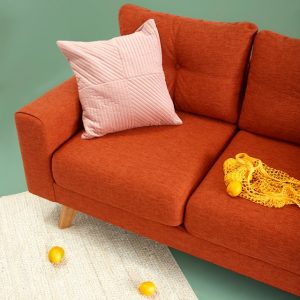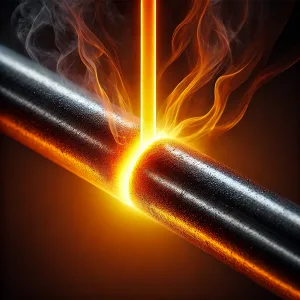DIY Pest Control vs. Professional Services in Central Coast: What You Need to Know
When dealing with pests in Central Coast, you might be torn between handling the issue yourself or hiring a professional. Both DIY pest control and professional services have their advantages and limitations, and choosing the right approach depends on your specific needs & circumstances. In this guide, we’ll explore the pros and cons of each option to help you make an informed decision.
DIY Pest Control: Pros and Cons
Pros:
- Cost-Effective: DIY pest control can be less expensive upfront than hiring a professional. You can purchase over-the-counter products or use natural remedies to address pest problems without paying for a service fee.
- Immediate Action: When you notice a pest problem, you can act quickly with DIY methods. This is especially useful for minor infestations where immediate intervention can prevent a bigger issue.
- Flexibility: DIY methods allow you to choose when and how to address the problem. You can tailor your approach to your schedule & preferences.
Cons:
- Limited Effectiveness: While DIY products can manage minor pest issues, they may not be effective for severe infestations. For example, dealing with termites often requires more specialised treatments than those available to the public.
- Health and Safety Risks: Some DIY pest control products contain strong chemicals that can be harmful if not used correctly. Misuse can lead to health risks for you & your family or damage to your home.
- Time-Consuming: DIY pest control can be time-consuming, especially if the problem persists or requires multiple treatments. It often involves research, application & monitoring to see results.
- Incomplete Solutions: DIY treatments might not address the root cause of the pest problem. Without a thorough understanding of pest behaviour, you may only be treating symptoms rather than solving the underlying issue.
Professional Pest Control Services: Pros and Cons
Pros:
- Expertise and Experience: Professional pest control in Central Coast have the knowledge and experience to handle a wide range of pest problems. They can identify pests, assess the extent of the infestation, and apply effective treatments.
- Comprehensive Solutions: Professionals offer thorough inspections, like termite inspection in Central Coast, and treatments that target both the pests and their nests or breeding grounds. They use advanced techniques and products that are not available to the general public.
- Long-Term Results: Professional services often provide long-term solutions and preventive measures. They not only address current infestations but also help prevent future problems.
- Safety and Compliance: Certified pest control technicians follow strict safety guidelines and use products that are safe for humans and pets when applied correctly. They also ensure compliance with local regulations regarding pest control.
Cons:
- Cost: Professional pest control services are generally more expensive than DIY methods. The cost includes not only the treatment but also the expertise and equipment used.
- Scheduling: You need to coordinate with the pest control service to schedule inspections and treatments. This might be less flexible than handling the issue on your own.
- Disruption: Professional treatments may cause temporary disruption to your home, such as the need to vacate during certain procedures or the use of strong-smelling chemicals.
Which Option is Best for You?
Choosing between DIY pest control and professional services depends on several factors:
- Severity of the Infestation: For minor issues like a few ants or spiders, DIY methods might be sufficient. However, for significant problems, such as termites or large rodent infestations, professional services are likely more effective.
- Your Expertise: If you have experience with pest control and are comfortable using products and techniques safely, DIY might work for you. If you’re unsure or uncomfortable, a professional can ensure the job is done correctly.
- Budget: Consider your budget for pest control. DIY methods are cheaper upfront but may not be as effective in the long run. Professional services are more costly but offer comprehensive solutions and potentially better results.
- Health and Safety: If you have concerns about using chemical treatments or if you have young children or pets, professional services might be a safer choice due to their expertise in handling and applying products safely.
FAQs
- What should I do if I suspect a termite infestation in my Central Coast home? If you suspect termites, it’s best to arrange a termite inspection in Central Coast with a professional. They can assess the extent of the infestation and recommend appropriate termite treatment to protect your home.
- Are DIY pest control methods effective for termite problems? DIY methods are generally not sufficient for termite problems, as termites require specialised treatments. Professional pest control services offer targeted termite treatment that is more effective for eliminating infestations.
- How often should I have professional pest control inspections? It’s a good idea to have regular inspections, especially if you live in an area prone to pests. Annual inspections can help detect problems early and ensure that your home remains pest-free.
- Can I combine DIY methods with professional pest control services? Yes, combining DIY methods with professional services can be effective. For example, you might use DIY treatments for minor issues while relying on professionals for more severe infestations or preventative measures.
- How do I choose a reputable pest control service in Central Coast? Look for companies with positive reviews, certifications, and experience in dealing with pests specific to the Central Coast. Asking for recommendations from friends or family can also help you find a trustworthy provider.
When it comes to pest control in Central Coast, both DIY methods and professional services have their place. DIY can be a cost-effective solution for minor issues, while professional services offer comprehensive treatments and long-term solutions for more serious infestations. Assess the severity of your pest problem, consider your budget, and choose the option that best meets your needs. Whether you opt for DIY or professional help, addressing pest issues promptly will help keep your home safe and comfortable





